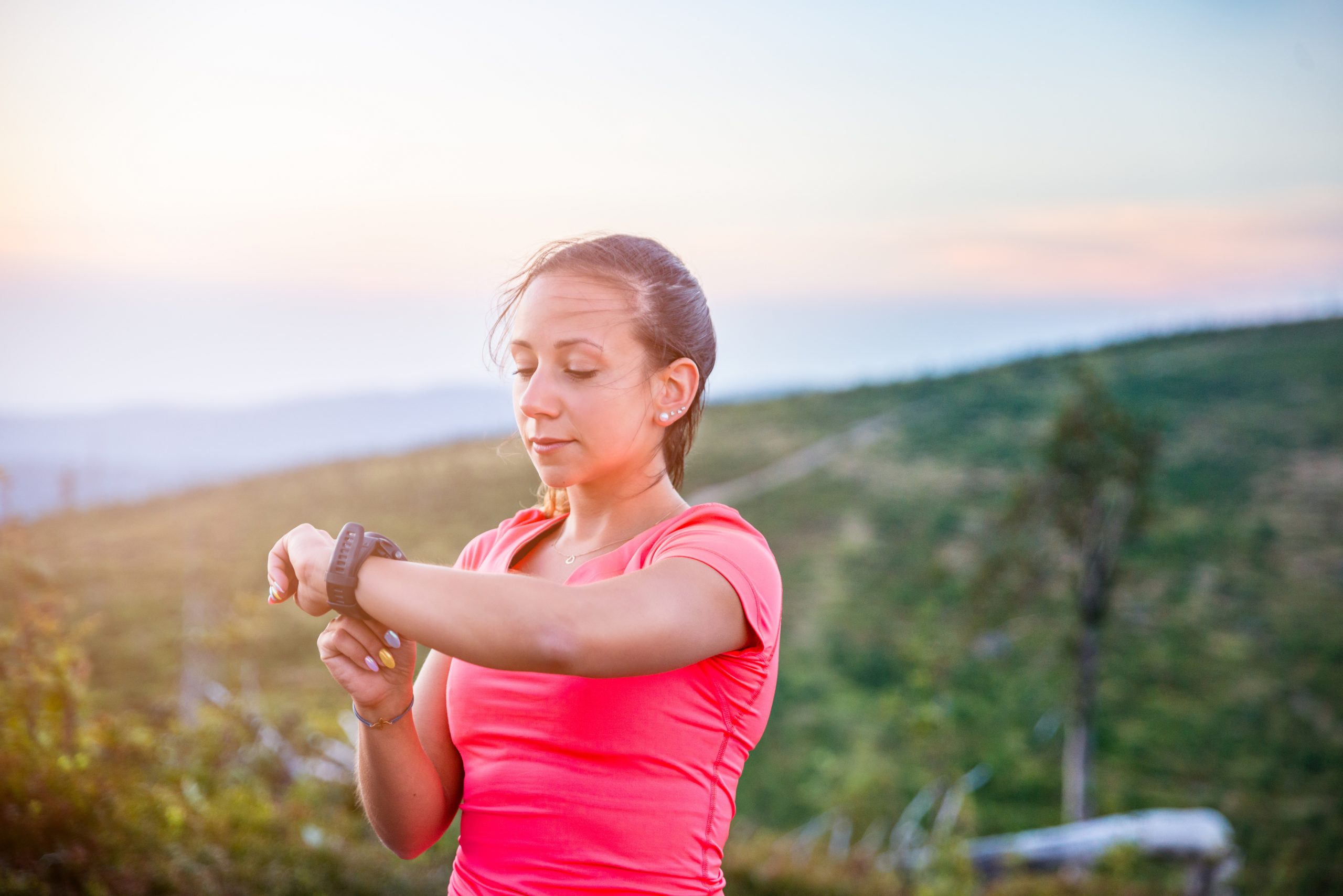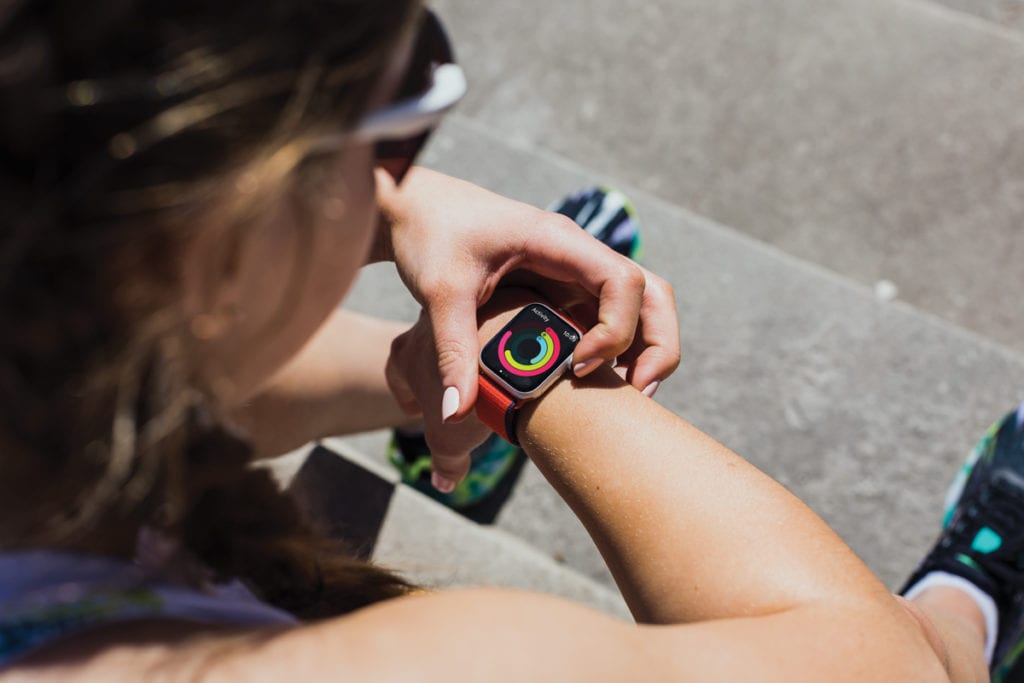How I learned to take off my digital watch before it became “like a handcuff”
My love-hate relationship with my “nanny” smartwatch

I was trekking in Torres del Paine National Park in Patagonia in January and had been without cell service for days when my Garmin suddenly went crazy. I’d just emerged from a deep valley onto a high, barren amphitheatre ringed by glacial mountains when the iPhone buried in my pack connected with a tower somewhere and my watch started to vibrate, a cascade of notifications tumbling down its face.
“The Green Metro line is down in Montreal,” I told my husband. Montreal, 10,500 kilometres away. Well, how about that? Clearly, I needed to know.
I am smitten by my Garmin, a Forerunner 955 Solar that can go a week or more without a recharge, offers me suggested workouts if I haven’t downloaded any, even predicts my race times. In truth, I still haven’t figured out half of what it can do. But I also hate that this device — a gift to replace the 10-year-old one that took up half my arm — is trying to run my life.
This dawned on me slowly. It had been a long time since I’d monitored my heart rate, the chest strap that came with my old device having given out years ago. But my brand-new smartwatch has the heart rate function built right in, so I started wearing it to bed so I could check out my resting heart rate first thing in the morning. It felt weird on my wrist, but it was kind of fun to wake up to that sunny watch face with its cheerful “Good morning” message, asking me if I was ready to start the day.
I could not have anticipated what it would do to my mood to scroll through my morning report and see my sleep score — sometimes “poor,” invariably “fair” — accompanied by a tiny bar graph to show how little of the right kind of sleep I’d had, along with an “insight” to tell me what this might mean for the day ahead:
- “You slept long enough, but your time spent in deep sleep was short. Recalling memories and concentrating may feel more challenging today.”
- “You slept a bit less than recommended, and your amount of REM sleep was low. You may feel more tired or moody today.”
- “…your amount of REM sleep was low. Creativity and problem solving may be challenging today.”
Thank you, Garmin. Welcome to the world of a post-menopausal woman. Do you think I need my fitness tracker to tell me how poorly I slept?
I showed my middling sleep scores to my friend Lynne, a full-fledged insomniac, and she laughed at my apparent belief that my watch even knows what it is talking about. Lynne actually went to sleep school to learn to manage her nighttime wakefulness, which entailed spending four nights in a lab so the experts could analyze her sleep patterns.
“They wire you up with electrodes attached to your head — like, dozens of them — and to all your pulse points and your feet. Then they put this control case in the middle of your chest, so you look like some kind of suicide bomber,” she said. “So when I listen to people say how they’ve got this new watch, and it’s reading their brain waves, just sitting on their wrist – you know, I’m no expert, but I cannot believe you’re getting a true and accurate reading of what’s going on while you sleep.”

To be fair, neither Garmin nor Apple nor any of the other biometric data-tracking gadget makers claim their devices read brainwaves. Still, there is something to Lynne’s skepticism about the accuracy of the trackers’ sleep scores and what purpose that data serves. In a 2022 paper in the journal Sleep, Matthias Baumert, a biomedical engineer at University of Adelaide, and his co-authors concluded it’s “currently impossible to objectively interpret and compare” the sleep findings of different devices. With so many wearable fitness trackers sold — the number is expected to surpass 379 million next year — they want to see guidelines to standardize sleep data and a certification process for the devices that meet those standards.
I get that the measurement is offered merely as a tool for wearers to understand their own sleep health, as Garmin has said. And in my case, it only took a few weeks of wearing my watch to prove to me that a glass or two of wine in the evening all but guaranteed a fitful sleep, and a 2,500-metre swim workout late in the day meant I’d be left too wired to settle in at all before 1 or 2 a.m.
But I already knew that, didn’t I? Did I really need my nanny-watch wagging a finger at me, telling me how I felt in the morning? After a few months, I stopped wearing it to bed.
This is not a bad thing, according to Brice Favier-Ambrosini, who teaches future Phys. Ed teachers in the department of education sciences at Université du Québec à Chicoutimi. By picking and choosing what I want and need my smartwatch to do for me, I’m opting “not to be a prisoner of the device,” he says. Favier-Ambrosini points out a huge percentage of people who buy fitness trackers abandon them entirely within a few months, once the novelty has worn off. Some people feel overwhelmed by the data and the steep curve in learning to interpret it; others find the flow of data a distraction, or guilt-inducing rather than motivating. Some decide quantifying every aspect of their chosen leisure activity turns it into “forced labour,” Favier-Ambrosini says.
Favier-Ambrosini and his co-author, sport sociologist Matthieu Quidu, recently studied the habits of experienced runners who have used fitness trackers for years. They found removing the devices even for a single run made many of their subjects feel anxious, even naked. One runner went so far as to hide his watch in his backpack, so that he could look at the data later.
“I need to wear it, otherwise I felt like I’m running for nothing,” one runner reported. Without a record of the run, “it wouldn’t be listed in the great universe,” said another. “It’s tangible proof that I’m doing something.”
The researchers concluded those with the healthiest relationship with their devices are those who grant themselves the freedom not to measure every step and every heartbeat. They take into account what else is going on in their lives or the environmental conditions — say, icy sidewalks or hilly terrain — or they reserve intensive use of the device for key moments such as interval training sessions, but look at their watch sparingly on recovery runs.
There is no doubt a tracking device is a useful tool, Favier-Ambrosini says, but he aims to help young people learn to treat it as simply one tool in the toolbox, to supplement the awareness of oneself and one’s surroundings. Otherwise, the smartwatch with its constant digital feedback risks becoming one more form of addiction, he says, “one of the factors of collective exhaustion on a daily basis from our digital tools.”
Did I quantify and post to Strava my daily mileage and total ascent in Torres del Paine? I did, and I still love my Garmin for making that so easy. But I sometimes go entire days now without my watch on my wrist, recognizing myself in the runner who told Favier-Ambrosini that it had started to feel “like a handcuff.”
Loreen Pindera is a triathlete and freelance journalist from Montreal. This story originally appeared in the Triathlon Magazine 2024 Buyer’s Guide
